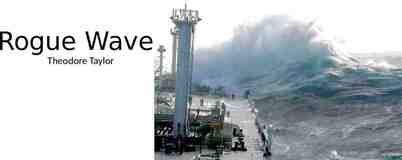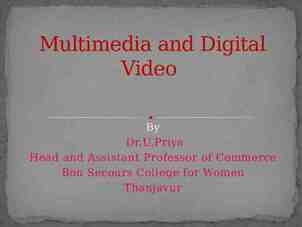Chapter 6: Formal Relational Query Languages Database System Concepts,
27 Slides370.50 KB

Chapter 6: Formal Relational Query Languages Database System Concepts, 6th Ed. Silberschatz, Korth and Sudarshan See www.db-book.com for conditions on re-use

Outline Relational Algebra Tuple Relational Calculus Domain Relational Calculus Database System Concepts - 6th Edition 6.2 Silberschatz, Korth and Sudarshan

Relational Algebra Procedural language Six basic operators select: project: union: set difference: – Cartesian product: x rename: The operators take one or two relations as inputs and produce a new relation as a result. Database System Concepts - 6th Edition 6.3 Silberschatz, Korth and Sudarshan

Select Operation Notation: p(r) p is called the selection predicate Defined as: p(r) {t t r and p(t)} Where p is a formula in propositional calculus consisting of terms connected by : (and), (or), (not) Each term is one of: attribute op attribute or constant where op is one of: , , , . . Example of selection: dept name “Physics”(instructor) Database System Concepts - 6th Edition 6.4 Silberschatz, Korth and Sudarshan

Project Operation Notation: A1 , A2 , , Ak (r ) where A1, A2 are attribute names and r is a relation name. The result is defined as the relation of k columns obtained by erasing the columns that are not listed Duplicate rows removed from result, since relations are sets Example: To eliminate the dept name attribute of instructor ID, name, salary (instructor) Database System Concepts - 6th Edition 6.5 Silberschatz, Korth and Sudarshan

Union Operation Notation: r s Defined as: r s {t t r or t s} For r s to be valid. 1. r, s must have the same arity (same number of attributes) 2. The attribute domains must be compatible (example: 2nd column of r deals with the same type of values as does the 2nd column of s) Example: to find all courses taught in the Fall 2009 semester, or in the Spring 2010 semester, or in both course id ( semester “Fall” Λ year 2009 (section)) course id ( semester “Spring” Λ year 2010 (section)) Database System Concepts - 6th Edition 6.6 Silberschatz, Korth and Sudarshan

Set Difference Operation Notation r – s Defined as: r – s {t t r and t s} Set differences must be taken between compatible relations. r and s must have the same arity attribute domains of r and s must be compatible Example: to find all courses taught in the Fall 2009 semester, but not in the Spring 2010 semester course id ( semester “Fall” Λ year 2009 (section)) course id ( semester “Spring” Λ year 2010 (section)) Database System Concepts - 6th Edition 6.7 Silberschatz, Korth and Sudarshan

Set-Intersection Operation Notation: r s Defined as: r s { t t r and t s } Assume: r, s have the same arity attributes of r and s are compatible Note: r s r – (r – s) Database System Concepts - 6th Edition 6.8 Silberschatz, Korth and Sudarshan

Cartesian-Product Operation Notation r x s Defined as: r x s {t q t r and q s} Assume that attributes of r(R) and s(S) are disjoint. (That is, R S ). If attributes of r(R) and s(S) are not disjoint, then renaming must be used. Database System Concepts - 6th Edition 6.9 Silberschatz, Korth and Sudarshan

Rename Operation Allows us to name, and therefore to refer to, the results of relationalalgebra expressions. Allows us to refer to a relation by more than one name. Example: x (E) returns the expression E under the name X If a relational-algebra expression E has arity n, then x ( A1 , A2 ,., An ) ( E ) returns the result of expression E under the name X, and with the attributes renamed to A1 , A2 , ., An . Database System Concepts - 6th Edition 6.10 Silberschatz, Korth and Sudarshan

Formal Definition A basic expression in the relational algebra consists of either one of the following: A relation in the database A constant relation Let E1 and E2 be relational-algebra expressions; the following are all relational-algebra expressions: E1 E2 E1 – E2 E1 x E2 p (E1), P is a predicate on attributes in E1 s(E1), S is a list consisting of some of the attributes in E1 x (E1), x is the new name for the result of E1 Database System Concepts - 6th Edition 6.11 Silberschatz, Korth and Sudarshan

Tuple Relational Calculus Database System Concepts - 6th Edition 6.12 Silberschatz, Korth and Sudarshan

Tuple Relational Calculus A nonprocedural query language, where each query is of the form {t P (t ) } It is the set of all tuples t such that predicate P is true for t t is a tuple variable, t [A ] denotes the value of tuple t on attribute A t r denotes that tuple t is in relation r P is a formula similar to that of the predicate calculus Database System Concepts - 6th Edition 6.13 Silberschatz, Korth and Sudarshan

Predicate Calculus Formula 1. Set of attributes and constants 2. Set of comparison operators: (e.g., , , , , , ) 3. Set of connectives: and ( ), or (v)‚ not ( ) 4. Implication ( ): x y, if x if true, then y is true x y x v y 5. Set of quantifiers: t r (Q (t )) ”there exists” a tuple in t in relation r such that predicate Q (t ) is true t r (Q (t )) Q is true “for all” tuples t in relation r Database System Concepts - 6th Edition 6.14 Silberschatz, Korth and Sudarshan

Example Queries Find the ID, name, dept name, salary for instructors whose salary is greater than 80,000 {t t instructor t [salary ] 80000} Notice that a relation on schema (ID, name, dept name, salary) is implicitly defined by the query As in the previous query, but output only the ID attribute value {t s instructor (t [ID ] s [ID ] s [salary ] 80000)} Notice that a relation on schema (ID) is implicitly defined by the query Database System Concepts - 6th Edition 6.15 Silberschatz, Korth and Sudarshan

Example Queries Find the names of all instructors whose department is in the Watson building {t s instructor (t [name ] s [name ] u department (u [dept name ] s[dept name] “ u [building] “Watson” ))} Find the set of all courses taught in the Fall 2009 semester, or in the Spring 2010 semester, or both {t s section (t [course id ] s [course id ] s [semester] “Fall” s [year] 2009 v u section (t [course id ] u [course id ] u [semester] “Spring” u [year] 2010 )} Database System Concepts - 6th Edition 6.16 Silberschatz, Korth and Sudarshan

Example Queries Find the set of all courses taught in the Fall 2009 semester, and in the Spring 2010 semester {t s section (t [course id ] s [course id ] s [semester] “Fall” s [year] 2009 u section (t [course id ] u [course id ] u [semester] “Spring” u [year] 2010 )} Find the set of all courses taught in the Fall 2009 semester, but not in the Spring 2010 semester {t s section (t [course id ] s [course id ] s [semester] “Fall” s [year] 2009 u section (t [course id ] u [course id ] u [semester] “Spring” u [year] 2010 )} Database System Concepts - 6th Edition 6.17 Silberschatz, Korth and Sudarshan

Universal Quantification Find all students who have taken all courses offered in the Biology department {t r student (t [ID] r [ID]) ( u course (u [dept name] “Biology” s takes (t [ID] s [ID ] s [course id] u [course id]))} Database System Concepts - 6th Edition 6.18 Silberschatz, Korth and Sudarshan

Safety of Expressions It is possible to write tuple calculus expressions that generate infinite relations. For example, { t t r } results in an infinite relation if the domain of any attribute of relation r is infinite To guard against the problem, we restrict the set of allowable expressions to safe expressions. An expression {t P (t )} in the tuple relational calculus is safe if every component of t appears in one of the relations, tuples, or constants that appear in P NOTE: this is more than just a syntax condition. E.g. { t t [A] 5 true } is not safe --- it defines an infinite set with attribute values that do not appear in any relation or tuples or constants in P. Database System Concepts - 6th Edition 6.19 Silberschatz, Korth and Sudarshan

Safety of Expressions (Cont.) Consider again that query to find all students who have taken all courses offered in the Biology department {t r student (t [ID] r [ID]) ( u course (u [dept name] “Biology” s takes (t [ID] s [ID ] s [course id] u [course id]))} Without the existential quantification on student, the above query would be unsafe if the Biology department has not offered any courses. Database System Concepts - 6th Edition 6.20 Silberschatz, Korth and Sudarshan

Domain Relational Calculus Database System Concepts - 6th Edition 6.21 Silberschatz, Korth and Sudarshan

Domain Relational Calculus A nonprocedural query language equivalent in power to the tuple relational calculus Each query is an expression of the form: { x1, x2, , xn P (x1, x2, , xn)} x1, x2, , xn represent domain variables P represents a formula similar to that of the predicate calculus Database System Concepts - 6th Edition 6.22 Silberschatz, Korth and Sudarshan

Example Queries Find the ID, name, dept name, salary for instructors whose salary is greater than 80,000 As in the previous query, but output only the ID attribute value { i, n, d, s i, n, d, s instructor s 80000} { i i, n, d, s instructor s 80000} Find the names of all instructors whose department is in the Watson building { n i, d, s ( i, n, d, s instructor b, a ( d, b, a department b “Watson” ))} Database System Concepts - 6th Edition 6.23 Silberschatz, Korth and Sudarshan

Example Queries Find the set of all courses taught in the Fall 2009 semester, or in the Spring 2010 semester, or both { c a, s, y, b, r, t ( c, a, s, y, b, r, t section s “Fall” y 2009 ) v a, s, y, b, r, t ( c, a, s, y, b, r, t section ] s “Spring” y 2010)} This case can also be written as { c a, s, y, b, r, t ( c, a, s, y, b, r, t section ( (s “Fall” y 2009 ) v (s “Spring” y 2010))} Find the set of all courses taught in the Fall 2009 semester, and in the Spring 2010 semester { c a, s, y, b, r, t ( c, a, s, y, b, r, t section s “Fall” y 2009 ) a, s, y, b, r, t ( c, a, s, y, b, r, t section ] s “Spring” y 2010)} Database System Concepts - 6th Edition 6.24 Silberschatz, Korth and Sudarshan

Safety of Expressions The expression: { x1, x2, , xn P (x1, x2, , xn )} is safe if all of the following hold: 1. All values that appear in tuples of the expression are values from dom (P ) (that is, the values appear either in P or in a tuple of a relation mentioned in P ). 2. For every “there exists” subformula of the form x (P1(x )), the subformula is true if and only if there is a value of x in dom (P1) such that P1(x ) is true. 3. For every “for all” subformula of the form x (P1 (x )), the subformula is true if and only if P1(x ) is true for all values x from dom (P1). Database System Concepts - 6th Edition 6.25 Silberschatz, Korth and Sudarshan

Universal Quantification Find all students who have taken all courses offered in the Biology department { i n, d, tc ( i, n, d, tc student ( ci, ti, dn, cr ( ci, ti, dn, cr course dn “Biology” si, se, y, g ( i, ci, si, se, y, g takes ))} Note that without the existential quantification on student, the above query would be unsafe if the Biology department has not offered any courses. Database System Concepts - 6th Edition 6.26 Silberschatz, Korth and Sudarshan

End of Chapter 6 Database System Concepts, 6th Ed. Silberschatz, Korth and Sudarshan See www.db-book.com for conditions on re-use






